Enjoy A Spring Trip To The Highlands Of Northern Vietnam
The Northeast and Northwest regions in Vietnam are endowed with wild beauty, consisting of majestic mountains with many high massifs, limestone mountains, majestic waterfalls, and many caves of unique pristine beauty.
Along with natural landscapes, a large and rich cultural and historical space is also a highlight in the Northeast and Northwest regions. The traditional customs, cultural life, and daily labor of the ethnic minorities living in this area have a beneficial effect on the economic development in terms of agriculture and tourism in Vietnam.
Moc Chau – Breath-taking natural paradise
As a tourist highlight of Son La province, Moc Chau has a unique beauty in all four seasons that attracts tourists. Not only are the green tea hills stretching endlessly, but this plateau is also attractive with rose gardens, apricot forests, and waterfalls. With the local creative tourism method, tourists coming to Moc Chau every year have many new things to experience.
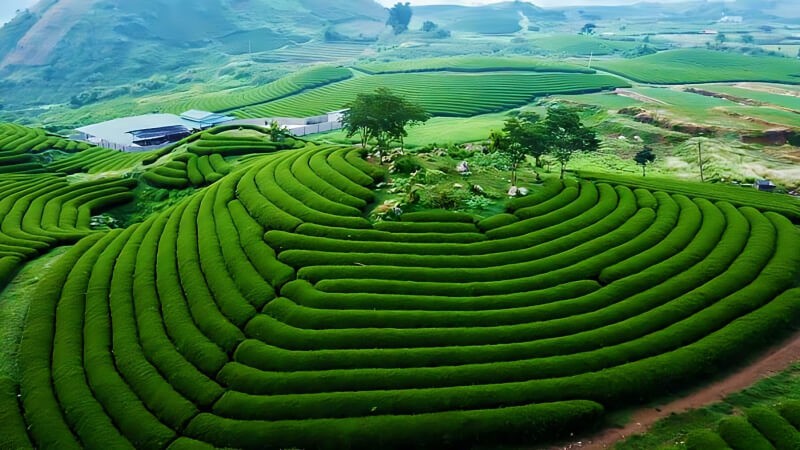 |
| As a tourist highlight of Son La province, Moc Chau has a unique beauty in all four seasons that attracts tourists. Photo: Bach Hoa Xanh |
After the Lunar New Year, from February to March, domestic and international tourists eagerly flock to Moc Chau to immerse themselves in the pure white apricot, plum, and mustard flowers. Hang Tau primitive village is also a pristine destination that has recently become famous among young people.
During this year's Tet holiday, the number of visitors to Moc Chau increased 5-6 times as much as usual. Sightseeing service prices have hardly increased, food and beverage prices are stable, and accommodation services have increased slightly due to the large number of visitors.
Throughout the year, Moc Chau's temperate climate generously bestows pleasant conditions, an enchanting caress that soothes the soul. However, the best time to visit Moc Chau depends on the type of experience the visitors seek.
Moc Chau Plateau is renowned for its stunning natural beauty, particularly during the spring season. From February to April, the plateau transforms into a vibrant paradise as cherry blossoms, plum blossoms, and peach blossoms blanket the region in a sea of pink and white. The sight of these blossoms combined with the fresh mountain air creates a serene and enchanting atmosphere that attracts visitors from far and wide.
Dong Van Karst Plateau – The wild beauty of Northern Vietnam
Dong Van Karst Plateau Geopark is the main thing to do in Ha Giang. Recognized as a member of the UNESCO Geopark Network, Dong Van features a vast area of limestone that covers the provinces of Ha Giang. Located at a height of 1400 – 1600 meters above sea level, the geographical characteristics of Dong Van Plateau are just as dramatic as it can get with sheer mountain cliffs running to the horizon.
The 2,356sqkm of Dong Van Karst Plateau is one of Vietnam’s special limestone features besides other excellent examples such as Halong Bay or Phong Nha – Ke Bang National Park, housing prominent imprints that depict the development of the earth’s crust and natural phenomenon.
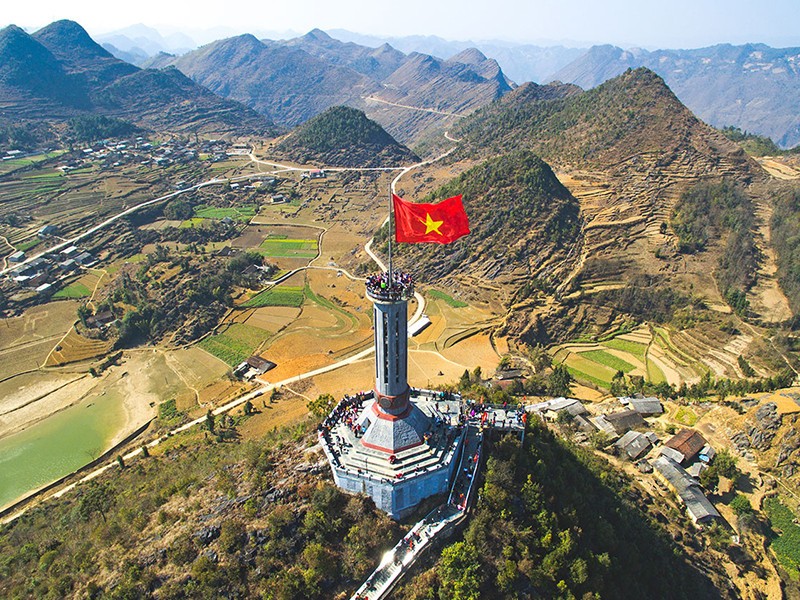 |
| Recognized as a member of the UNESCO Geopark Network, Dong Van features a vast area of limestone that covers the provinces of Ha Giang. Photo: Trang An Travel |
Dong Van Karst Plateau Geopark boasts striking scenery, high biodiversity, and a cultural spectrum of local ethnic groups. Riding on the Happiness Road that connects Ha Giang City and the four mountainous districts,
There are huge mountains and deep canyons to be found here of which the highest peak is Mount Mieu Vac (1971m) and the deepest canyon is Tu San (800m). The landscape at Tu San Canyon has become something tourists should look forward to when climbing up Ma Pi Leng Pass.
According to the Department of Culture, Sports and Tourism of Ha Giang province, during the three days of the Lunar New Year, the province welcomed 141,200 visitors, an increase of 64% compared to last year. Tet is over but spring is still here, the number of tourists coming to Ha Giang for spring travel in 2024 promises to still be impressive numbers.
Sa Pa – A wonderful paradise
Sa Pa is always one of the top choices of tourists who desire to touch the clouds and sky of the Northwest highlands. Sapa weather is characterized by its four seasons, offering a unique charm. Summer is warm and humid, while winter is cold and dry, with occasional snowfall. Autumn and spring are the best time to visit Sapa, as the weather is mild, and the town is covered with colorful foliage, making it a perfect destination for hiking, trekking, and sightseeing.
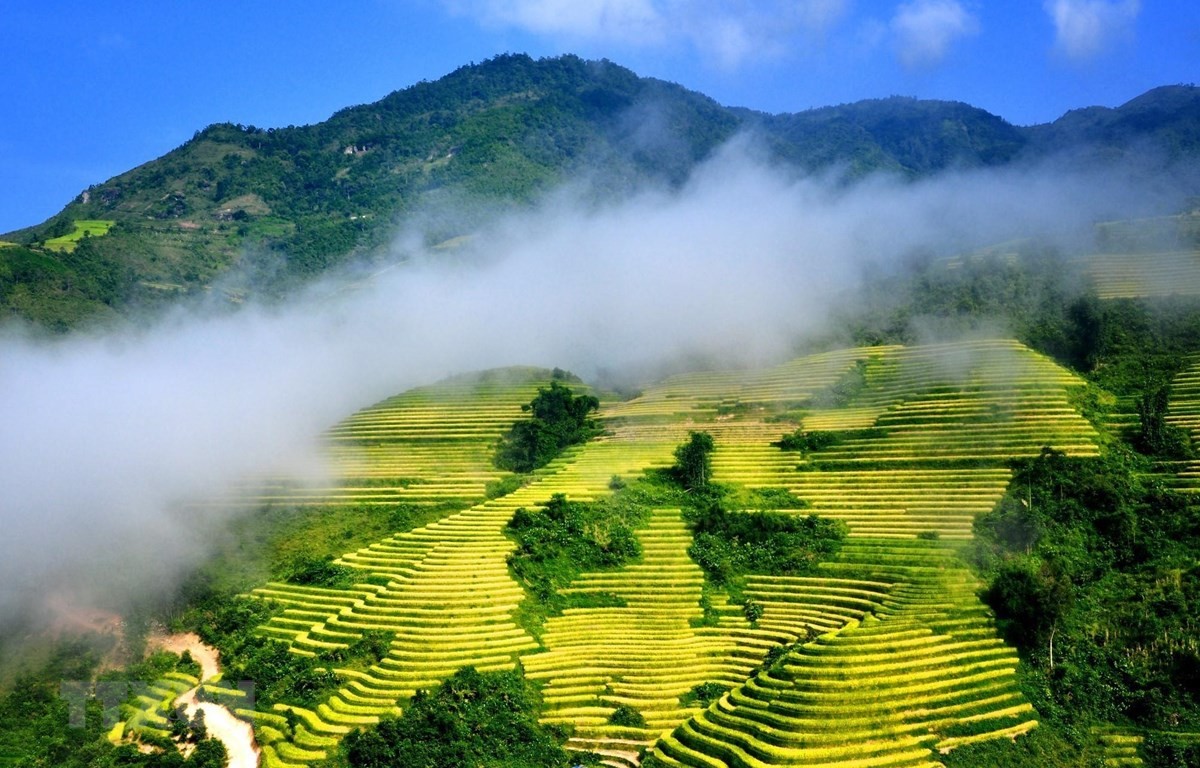 |
| Sa Pa is always one of the top choices of tourists who desire to touch the clouds and sky of the Northwest highlands. Photo: Bao Binh Phuoc |
The best time to visit Sapa is from September to November and from March to May. During these months, the weather is relatively mild, with clear skies and cool temperatures, making it perfect for outdoor activities such as hiking and exploring the surrounding countryside.
In September and October, the rice fields in Sapa turn golden yellow, creating a stunning spectacle that attracts many visitors. This period is known as the rice harvest season, and it is an excellent time to witness the local farmers harvesting their crops.
The weather is pleasant and mild from March to May, with a lot of sunshine and blooming flowers. This period is perfect for trekking and exploring the scenic landscapes of Sapa. The average temperature during this time ranges from 15°C to 25°C.
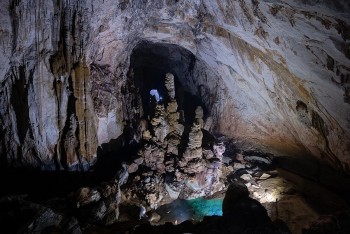 | Son Doong Among The 10 Best Caves In The World Global magazine Timeout recently featured Son Doong Cave in Vietnam’s central Quang Binh province on the list of the 10 best caves in the world. |
 | Sa Pa, Vietnamese Coffee Are Praised By International Press Argentina's Infobae newspaper reported that Sa Pa is one of the 16 most beautiful small towns and Vietnamese coffee is in the top 10 best ... |
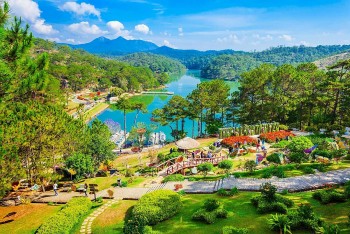 | Da Lat City Makes Asia's Top 9 Most Popular Natural Destinations The Central Highlands tourism city of Da Lat has been listed among Asia's top 9 nature destinations based on searches made on the digital travel ... |
Recommended
 Travel
Travel
Strategies for Sustainable Growth of Vietnam’s Tourism from International Markets
 Travel
Travel
Vietnam Strengthens Its Presence On The Global Tourism Map
 Multimedia
Multimedia
Phong Nha-Ke Bang National Park Named Top Adventure Travel Site
 Travel
Travel
Vietnam Welcomes Record-High Number of International Visitors
 Travel
Travel
Luxury Train From Hanoi To Hai Phong To Be Launched In May
 Travel
Travel
Phong Nha Named Top Budget-Friendly Travel Destination for Spring 2025: Agoda
 Travel
Travel
Four Indian Films Introduced to Lao Cai Audience
 Travel
Travel


